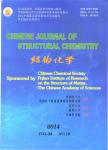Computational Studies of Toluene, Methyl Ethyl Ketone, Lubricating and Their Blends: a Combination of Density Functional Theory and Molecular Dynamics
Computational Studies of Toluene, Methyl Ethyl Ketone, Lubricating and Their Blends: a Combination of Density Functional Theory and Molecular Dynamics作者机构:Beijing University of Chemical TechnologyBeijing100029China Yanshan Branch of Beijing Research Institute ofChemical IndustrySinopecBeijing102500China National Engineering Research Center for Synthesis of NovelRubber and Plastic MaterialsBeijing102500China
出 版 物:《Chinese Journal of Structural Chemistry》 (结构化学(英文))
年 卷 期:2019年第38卷第8期
页 面:1251-1265页
核心收录:
学科分类:081704[工学-应用化学] 07[理学] 070304[理学-物理化学(含∶化学物理)] 08[工学] 0817[工学-化学工程与技术] 0703[理学-化学]
基 金:supported by Beijing Key Laboratory of Energy Environmental Catalysis Beijing University of Chemical Technology Beijing of China Yanshan Branch of Beijing Research Institute of Chemical Industry,Sinopec
主 题:solvent dewaxing molecular simulation density functional theory molecular dynamics
摘 要:The microstructure and intermolecular interaction of toluene(TOL), methyl ethyl ketone(MEK), lube oil, TOL-MEK solvents, and TOL-MEK-oil solutions were studied by molecular simulation. Some simulation results agree well with the experiment, which suggests that the simulation method we adopted is a powerful tool to obtain microscopic property of the systems. The density functional theory(DFT) calculation results suggest that the interaction group of toluene and MEK is the methyl group of theirs. And the interaction between toluene and MEK is attractive. The contribution of van der Waals interaction to the change of total energy of the TOL-MEK system is major, and the second is electrostatic interaction. Molecular dynamics(MD) simulation analyzes the solubility parameter(SP), mean square displacement(MSD), radius of gyration(RG), and radial distribution function(RDF) of solvents and solutions. The results are that the solubility parameter of the blend solvents decreases with temperature, and increases with the proportion of methyl ethyl ketone in principle, and that of lube oil also trends to decrease with temperature. The MSD results give one reason of why the transmission rate of MEK is greater in membrane separation process of recovery toluene and MEK and the permeation flux increases with MEK:TOL. The RG analysis predicts that the permeability of the oil molecule is likely to rise with temperature during dewaxing solvent recovery process by membrane. The analysis of RDFs shows that the intermolecular interaction of C···C, O···O and C···O makes a major contribution to the total interaction energy.



